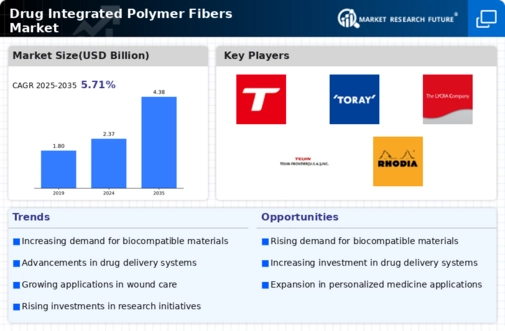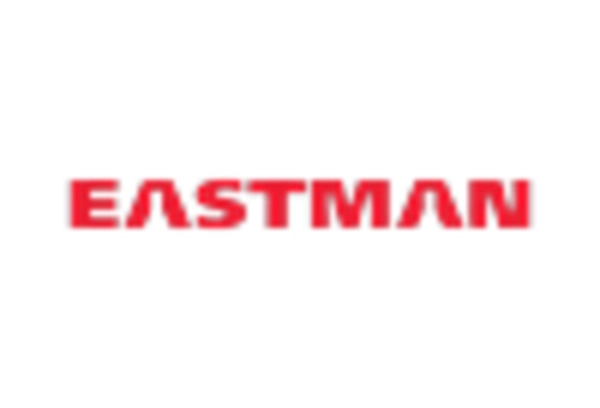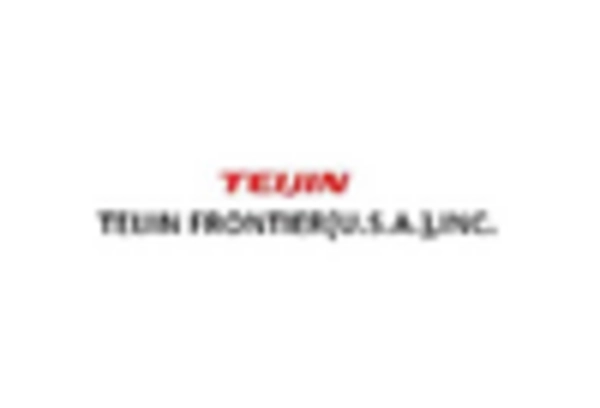Market Growth Projections
The Global Drug Integrated Polymer Fibers Market Industry is projected to experience substantial growth over the next decade. With a market value expected to reach 2.37 USD Billion in 2024 and further expand to 4.38 USD Billion by 2035, the industry is poised for a robust trajectory. The anticipated compound annual growth rate (CAGR) of 5.73% from 2025 to 2035 highlights the increasing adoption of these advanced materials in various medical applications. This growth is driven by factors such as technological advancements, rising healthcare investments, and the demand for personalized medicine, indicating a promising future for drug-integrated polymer fibers.
Growing Awareness of Personalized Medicine
The growing awareness of personalized medicine is influencing the Global Drug Integrated Polymer Fibers Market Industry significantly. As healthcare shifts towards tailored treatment approaches, the need for drug delivery systems that can be customized to individual patient needs becomes paramount. Drug-integrated polymer fibers offer the flexibility to modify drug release rates and dosages based on specific patient profiles. This trend aligns with the broader movement towards precision medicine, which emphasizes individualized treatment plans. Consequently, the market is poised for growth as healthcare providers increasingly adopt these innovative solutions to enhance therapeutic efficacy and patient satisfaction.
Rising Demand for Advanced Medical Textiles
The Global Drug Integrated Polymer Fibers Market Industry is experiencing a notable surge in demand for advanced medical textiles. These textiles, which integrate drug delivery systems, are increasingly utilized in wound care, surgical applications, and implantable devices. The growing prevalence of chronic diseases and the need for effective treatment options drive this demand. For instance, the market is projected to reach 2.37 USD Billion in 2024, reflecting a significant increase in healthcare investments. As healthcare providers seek innovative solutions, the integration of drug delivery capabilities into polymer fibers is likely to enhance patient outcomes and improve recovery times.
Technological Advancements in Fiber Production
Technological advancements in fiber production are propelling the Global Drug Integrated Polymer Fibers Market Industry forward. Innovations in polymer chemistry and manufacturing processes enable the creation of fibers with tailored drug release profiles and enhanced biocompatibility. For example, the development of electrospinning techniques allows for the production of nanofibers that can encapsulate drugs effectively. This technological evolution not only improves the efficacy of drug delivery systems but also expands their applications in various medical fields. As a result, the market is expected to grow at a CAGR of 5.73% from 2025 to 2035, indicating a robust future for these advanced materials.
Increased Investment in Healthcare Infrastructure
Increased investment in healthcare infrastructure is a critical driver for the Global Drug Integrated Polymer Fibers Market Industry. Governments and private entities are allocating substantial resources to enhance healthcare facilities and services, particularly in emerging economies. This investment fosters the adoption of innovative medical technologies, including drug-integrated polymer fibers. As healthcare systems evolve, the demand for advanced materials that support effective drug delivery and patient care is likely to rise. The anticipated growth in the market, reaching 4.38 USD Billion by 2035, underscores the importance of these investments in shaping the future of healthcare.
Regulatory Support for Innovative Medical Solutions
Regulatory support for innovative medical solutions is a vital driver for the Global Drug Integrated Polymer Fibers Market Industry. Regulatory bodies are increasingly recognizing the potential of drug-integrated polymer fibers in improving patient outcomes and are streamlining approval processes for these advanced materials. This supportive environment encourages research and development, fostering innovation in drug delivery technologies. As regulations evolve to accommodate new medical advancements, the market is likely to benefit from accelerated product development and commercialization. This trend not only enhances the market's growth prospects but also reinforces the commitment to improving healthcare through innovative solutions.

















Leave a Comment